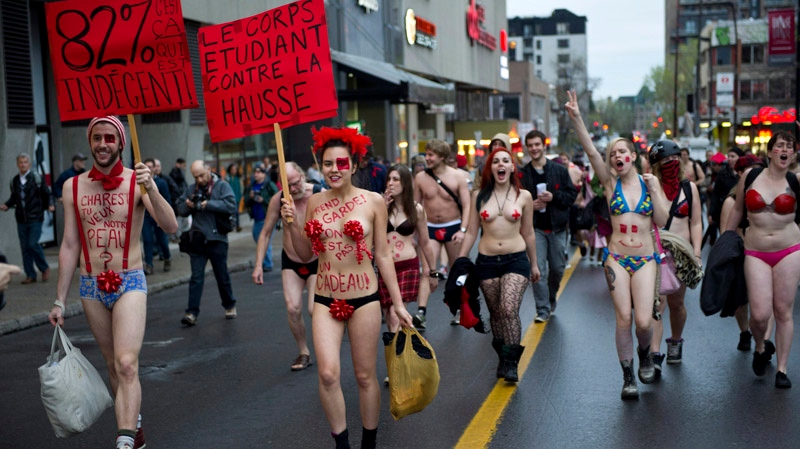Content warning: Mentions of sexual violence
Activism is an artform. Inspiring and resonating with enough people to make a difference often demands human connection through loud and creative means. Like spoken or written words, nudity carries endless potential for representing a cause, both within and beyond the feminist domain with which it is most commonly associated. Just last week in Montreal, demonstrators outside Hudson’s Bay went nude to mark National Anti-Fur Day, protesting The Bay and other companies’ manufacture and sale of fur. Of course, in most cultures, a mass of people marching down public streets in the nude carries shock value. Although naked protests are much more than a simple scheme to attract public awareness to a cause, in politics, nudity is a metaphorical goldmine.
While the Free the Nipple movement has seen significant victories in past years, nudity can be an effective political tool against more than just challenging sexist indecent exposure laws. It can also represent masses “stripped” of their fundamental rights, or it can spotlight the brutality of government, industry, and law enforcement in its juxtaposition to the fragile and vulnerable human body. It can articulate themes of transparency, to protest corruption and politicians’ shady behaviour—or individuality, to protest mass consumerism and the hegemony of large corporations.
This is what protestors had in mind when they flooded the streets leading up to Montreal’s 2012 Formula One Grand Prix, one of Canada’s largest global tourist events. Among others, Convergence des luttes anticapitalistes led nightly naked protests against the Grand Prix and its elitist stakeholders. “You’re sexy, you’re cute, take off your riot suit!” chanted protestors in response to police repression.
From a feminist perspective, the symbolism is even more powerful. For many feminist activists, marching together in the nude means regaining control over both the body itself and predominant gendered narratives of femininity. Through bold messages and paint smears on their exposed bodies, protestors shock bystanders and media away from romanticized, delicate, and inferior depictions of femininity. Men who leer at and objectify these protestors do not invalidate the intention behind their nudity—principally, it is her choice, no matter his reaction.
Protestors’ decision to participate in nude protests highlights women’s autonomy over their own bodies, an issue central to sexual violence, exploitation, and reproductive justice. For example, at the 2015 Slutwalk, a topless protest in Rio De Janeiro, up to 3,000 women marched against a sexist bill introduced by Eduardo Cunha that would require people in Brazil who wanted an abortion to provide evidence that they had been raped or faced medical danger due to the pregnancy. Similarly, in 2016, women in Sierra Leone protested naked against then-President Ernest Bai Koroma’s scrapping of a safe abortion bill under pressure from religious leaders and their foreign funders. This intentional nudity sends a clear message that a woman’s body, rights, choices, and decisions are hers, and hers only.
Regaining control through nude protests also subverts the overt sexual objectification of women. At the Brazil Slutwalk in Rio De Janeiro, nude protestors explained that they sought to challenge the narrative that women face sexual violence at their own fault because of what they choose to wear. Likewise, several Grand Prix protestors challenged the increased sexual exploitation and harassment that women in Montreal experienced during the event by tourists who then left before police initiated proper investigations.
Commenting on the 2012 Grand Prix demonstrations, former Premier Jean Charest claimed naked protests attacked the wrong people, disrupting the public instead of productively vocalizing concerns to the government. But nudity provokes action too. It is worth more than just its shock value and can be equally as intentional, meaningful, and targeted as other forms of protest. For example, in 2012, many Montreal students protested nearly naked to challenge proposed tuition hikes in Quebec, contributing to unrest that resulted in then-Premier Pauline Marois cancelling the proposal. During this demonstration, the students’ nudity did not prevent aggressive police repression with tear gas, batons, and pepper spray, but rather highlighted its arbitrary brutality.
The image of police in full riot suits chasing down completely exposed demonstrators is worth a thousand words. Indeed, this unconventional form of protest is about more than provoking double-takes and controversial conversations. It is legitimate and effective activism: The human body, in all its diversity and vulnerability, is extremely impactful.








